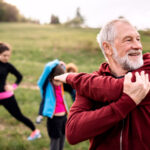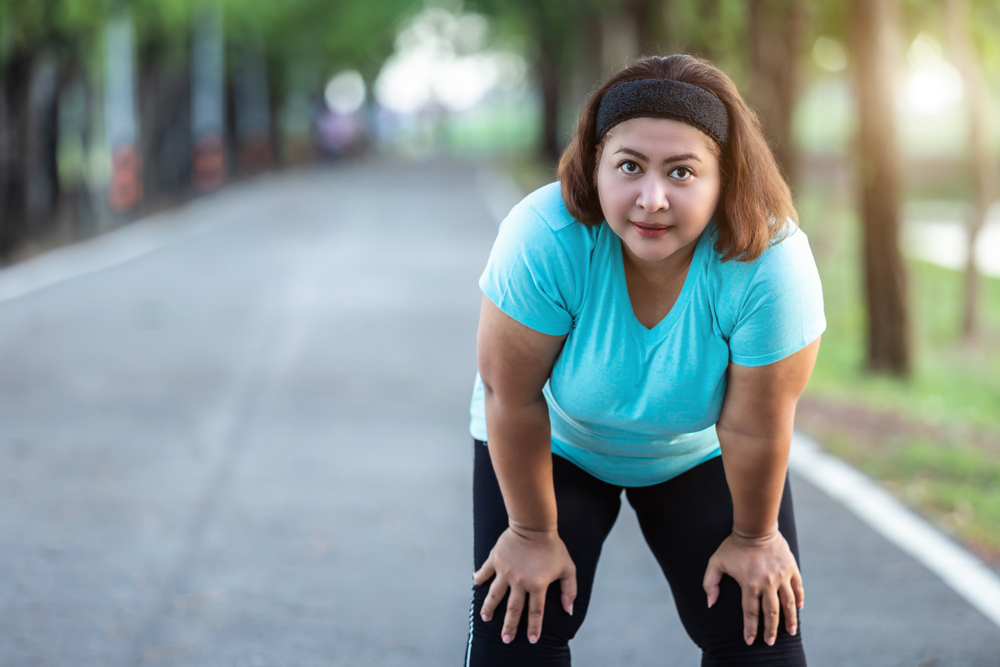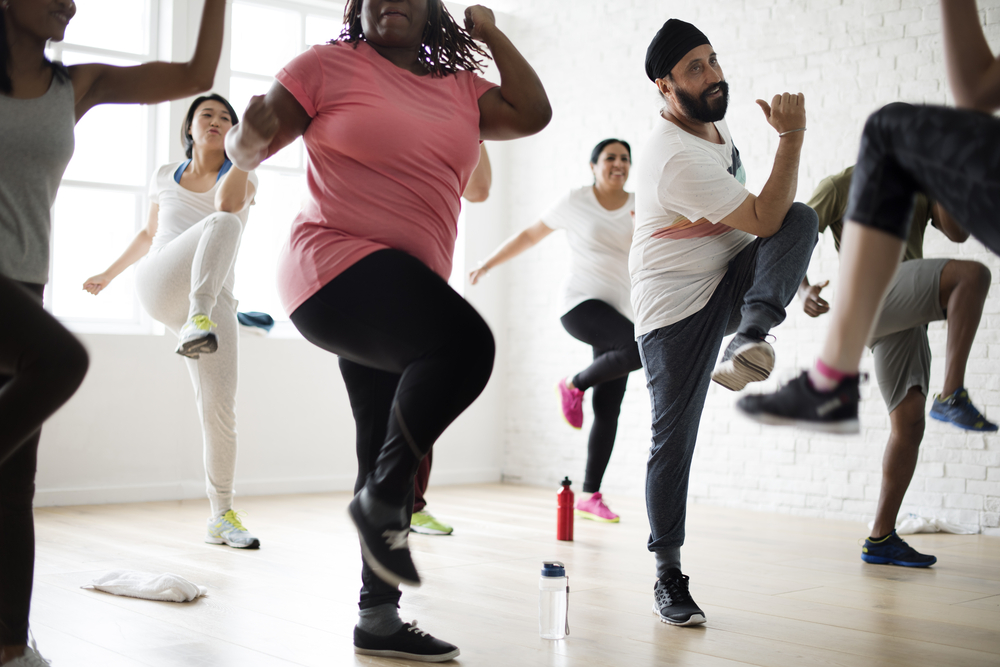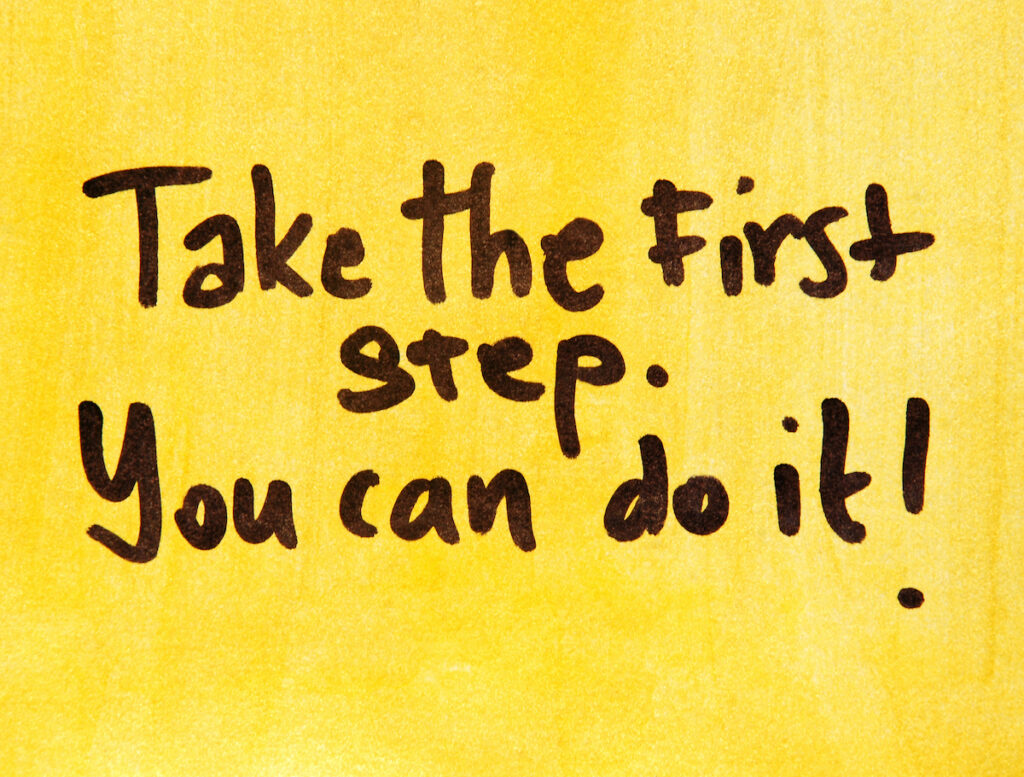
Did you know the World Health Organization recommends a minimum of 150 minutes of moderate exercise a week? Research suggests that only around 45% of people with severe mental illness (SMI) meet this goal. In comparison, around 73% of the general population achieve this (Vancampfort et al., 2017).
People with SMI are around twice as likely, when compared with the general population, to die from heart problems (Correll et al, 2017). These heart issues have been linked with increased sedentary lifestyles and a decrease in physical activity (PA). The mortality gap blogs written by other elves document this evidence base in some detail. Meanwhile, those with SMI who exercise regularly and do so consistently, show improvements in life expectancy, quality of life, mental health outcomes, BMI and cognition.
Living with a severe mental illness (SMI) can be difficult and disabling. This leads to different challenges for engaging in sports and activities compared to the general population. While it may be harder, people with SMI usually want to improve their physical health and exercise more, but express they do not receive enough support on how to engage in physical activity (PA).
Unfortunately, there are few well researched interventions to improve PA in people with SMI, with research lacking on what may help or hinder this support. Quirk and colleagues (2020) fill this research gap by exploring how people with SMI engage in physical activities in a recent systematic review.

WHO recommends a minimum of 150 minutes of moderate exercise per day, but only 45% of people with severe mental illness meet this goal.
Methods
Quirk et al. (2020) adopted a meta-ethnographic approach to this study, which is a method used to synthesise qualitative research where concepts and metaphors are translated across studies using a seven-step approach (Noblit & Hare, 1988). The researchers searched databases using terms like “physical activity” and “severe mental illness” to find articles to review. After discarding irrelevant papers, the researchers found 16 studies with the following PICOS criteria used to refine search terms for reviews:
- Participants: 18 years old or above with a diagnosed severe mental illness (SMI)
- Intervention: any community-based group physical activity
- Comparison: the participants could be compared to a no exercise group or any other activity group
- Outcomes: participants’ experiences with initiating physical activity programs (e.g., interviews and surveys)
- Setting: Community setting (not in a hospital, retirement home, etc.)
The four reviewers then read through the papers and extracted quotes from participants and the papers’ authors to find overarching themes. Each stage was reviewed by an independent reviewer. The reviewers then used the Critical Appraisal Skills Programme (CASP) checklist to rate the quality of each paper. After the concepts were established, the reviewers added their own themes and notes to summarise each study and to categorise different themes. The final results were formed by exploring these themes and how they interacted with each other. Finally, the reviewers presented their results to two individuals with lived experience of SMI to review the methodological limitations, relevance, coherence, and adequacy of the data using the CERQual tool.
Results
16 studies (including a total of 198 participants) published between 2003 and 2017, from mostly Western industrialised countries, were included. The types of physical activity (PA) varied from walking groups, swimming, horse-riding, golf, low impact walking and yoga, and other team sports, with the majority facilitated by an instructor.
Quirk and colleagues identified that themes represented a journey from physical inactivity to starting to engage in physical activity:
- Thinking about being active
- Planning and preparing for the physical activity
- Getting to the activity
- Beginning the activity
Each of the four phases of the journey is underlaid by subthemes, including:
- socialisation,
- physical barriers, and
- dependency on others.
All of these were influenced by two superordinate subthemes:
- associated with SMI (e.g. low self-esteem), and
- side effects of medication (e.g. feeling drowsy).

This study identified a journey from physical inactivity to engagement in physical activity, starting from thinking about being active, to planning and beginning the activity. Each of the phases was inter-related with barriers and influenced by mental health difficulties.
Conclusions
To sum up, the review found that getting people with severe mental illness (SMI) to start physical activity (PA) in a group setting is not just a simple jump from initiation to participation. Instead, the journey is a gradual process with many challenges and facilitators along the way, which may slow down or speed up the ride.
An important aspect of promoting PA in this population is taking an individualised approach. This implies taking an individual’s unique circumstances and values into account when encouraging them to partake in PA. For instance, whilst weight control might motivate one individual to exercise, the opportunity to socialise might be a more encouraging factor for another.

Getting people with severe mental illness to start a group physical activity is not just a simple jump from initiation to participation, but a gradual process with many challenges.
Strengths and limitations
A strength of the current study is the diligent adherence to the methodology laid out by Noblit & Hare; it was iterative and scrutinised by independent reviewers. However, the most notable strength is that the service users involved in the study felt that the conclusions truly reflected their experiences of their initiation of physical activity (PA). Whilst it is commendable that the study involved two people with lived experience during data analysis, this number will not be representative of the range of conditions included in the term severe mental illness (SMI). The findings may therefore benefit from increased service user involvement.
Another methodological limitation of the current study is a Western bias in the studies included, as all were conducted in English-speaking, industrialised countries. There may be further barriers and facilitators associated with PA engagement for people with SMI in non-Western or non-industrialised settings that could not be explored here.

The most notable strength was that the service users involved thought the findings were accurate, but with only 2 individuals involved, the representativeness will be limited.
Implications for practice
The review highlights the importance of having someone who is respected, valued and well-known to the person living with severe mental illness (SMI) as a source of support when starting the physical activity (PA) programme. How long this support should last for successful initiation has not been specified, however, this may be an area for future research.
In light of the COVID-19 pandemic and the subsequent boom in virtual exercise (Criddle, 2020), the benefits of digital PA for people with SMI could be explored. Although community-based PA is meant to promote social identity and reduce experiences of isolation and stigma (Carless & Sparks, 2008; Gorczynski & Faulkner, 2010; Soundy, Kingstone & Coffee, 2012) people with SMI identified that fear of embarrassment and apprehension around strangers makes them feel vulnerable in group settings. This, combined with family/childcare responsibilities and/or financial constraints might mean that virtual PA is particularly beneficial for people with SMI. However, other people with SMI believe group environments promote inclusion and feelings of connectedness which can facilitate their PA journey. Ultimately, these differing views about the role of ‘the group’ emphasise the importance of individualised approaches in delivering PA (and other) interventions.
Moreover, the feasibility and accessibility of some of the activities suggested in this review must be considered. How widely available are golf lessons, for example, and are they even affordable? Further study should consider the specific factors that encourage people to continue PA programs to help ensure their sustainability. Future research could also explore the nuances in the way group PA is viewed. For example, are solo activities amongst other people, like yoga classes, viewed differently from team-based activities, like football? By continuing to use qualitative methodologies like this we can build upon our understanding of the role that PA plays in people with SMIs journey to a better future.

Differing facilitators and barriers for each individual in initiating physical activity highlight the importance of individualised approaches in delivering physical activity (and other) interventions.
Statement of interests
None.
Contributors
Thanks to the UCL Mental Health MSc students who wrote this blog from Rowe B Group: Annabelle Durrad (@AnnabelleDurr4d), Davin Schmidt (@DavinSchmittlez), Duncan Lim, Ella Mather (@EllaMather5) and Hira Sharif (@HiraSharif1).
UCL MSc in Mental Health Studies
This blog has been written by a group of students on the Clinical Mental Health Sciences MSc at University College London. A full list of blogs by UCL MSc students from can be found here, and you can follow the Mental Health Studies MSc team on Twitter.
We regularly publish blogs written by individual students or groups of students studying at universities that subscribe to the National Elf Service. Contact us if you’d like to find out more about how this could work for your university.
Links
Primary paper
Quirk H, Hock E, Harrop D, Crank H, Peckham E, Traviss-Turner G, Machaczek K, Stubbs B, Horspool M, Weich S, Copeland R (2020). Understanding the experience of initiating community-based group physical activity by people with serious mental illness: A systematic review using a meta-ethnographic approach. European Psychiatry, 63(1), e95, 1–18
Other references
Vancampfort, D., et al.. (2017). Sedentary behavior and physical activity levels in people with schizophrenia, bipolar disorder and major depressive disorder: a global systematic review and meta‐analysis. World Psychiatry, 16(3), 308-315.
Correll, C. U., et al. (2017). Prevalence, incidence and mortality from cardiovascular disease in patients with pooled and specific severe mental illness: a large‐scale meta‐analysis of 3,211,768 patients and 113,383,368 controls.World Psychiatry, 16(2), 163-180.
Noblit, G. W., & Hare, R. D. (1988). Meta-ethnography: Synthesising qualitative studies, vol. 11. California: Sage Publications
Criddle, C., (2020, December 16). Coronavirus creates boom in digital fitness. BBC news.
Carless, D., & Sparkes, A. C. (2008). The physical activity experiences of men with serious mental illness: Three short stories. Psychol Sport Exerc, 9, 191-210.
Gorczynski, P., & Faulkner, G. (2010). Exercise therapy for schizophrenia. Cochrane Database Systematic Reviews, 5.
Soundy, A., Kingstone, T., & Coffee, P. (2012). Understanding the psychosocial processes of physical activity for individuals with severe mental illness: A meta-ethnography. Mental Illness, 2, 1-20.
Photo credits
- Photo by Ernest Brillo on Unsplash
- Photo by Jonas Jacobsson on Unsplash
- Photo by bantersnaps on Unsplash
- Photo by Fitsum Admasu on Unsplash

Is the first sentence correct?
https://www.who.int/news-room/fact-sheets/detail/physical-activity
Adults aged 18–64 years
•should do at least 150–300 minutes of moderate-intensity aerobic physical activity;
•or at least 75–150 minutes of vigorous-intensity aerobic physical activity; or an equivalent combination of moderate- and vigorous-intensity activity throughout the week
Hello Jane.
Here’s the reply from the UCL students who wrote the blog: Thank you for flagging up! It does seem to be that the WHO recommendations are for a week, and not daily as we wrote in the blog! Apologies for the confusion!
PS. This has been amended now. Thank you for spotting.